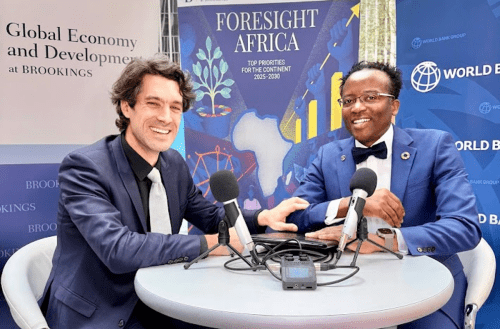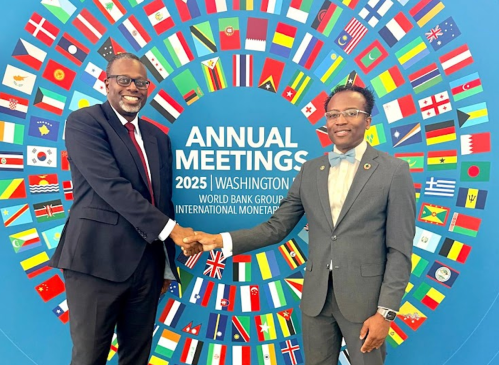China continues to generate controversy with its rapidly growing investments in Africa. However, new research reveals that some of the West’s biggest concerns over Chinese investment—its true size, its focus on natural resources, and its disregard for good governance—are not always well grounded.
China has emerged as Africa’s largest trading partner, providing demand for the continent’s energy and minerals. At the same time, there is a growing volume of Chinese direct investment in Africa. Some of it has taken the form of high-profile natural resource deals in countries with poor track records of governance (e.g., Angola and Sudan). These developments have given rise to a number of ideas about Chinese investment in Africa: That it is on the same enormous scale as China’s trade; that it is aimed primarily at natural resources; and that it is concentrated in countries with poor governance. These concerns are expressed in Western headlines such as “Into Africa: China’s Wild Rush,” or “China in Africa: Investment or Exploitation?” In our new paper, “Why is China investing in Africa? Evidence from the firm level,” we show that each of these ideas is, to a large extent, a myth not backed up by data.
First, on the scale of China’s direct investment in Africa, Chinese statistics on what they call “overseas direct investment” (ODI) show a stock of $26 billion in Africa as of the end of 2013. This number would amount to about 3 percent of total foreign direct investment (FDI) on the continent. UNCTAD’s World Investment Report 2015 similarly finds that the flow of Chinese FDI to Africa during 2013-2014 was 4.4 percent of the total to the continent. The European Union countries, led by France and the United Kingdom, are the overwhelmingly largest investors in Africa. The U.S. is also significant, and even South Africa invests more on the continent than China does. Clearly, China’s FDI does not meet the extreme heights many believe.
Second, concerning natural resources, in our paper we examine the allocation across African countries of the stock of Chinese ODI and the stock of total FDI (which, as noted, mostly comes from Western countries). Other things equal, African countries that are more resource rich attract more Chinese investment. However, this effect is about the same for Western investment, and it is only one factor determining investment. For example, Chinese ODI is also influenced by the size of the domestic market, indicating that some of it is aimed at serving that market.
We go beyond the aggregate data and also work with the firm-level data compiled by China’s Ministry of Commerce (MOFCOM). All Chinese enterprises making direct investments abroad have to register with MOFCOM. The resulting database provides the investing company’s location in China and line of business. It also includes the country to which the investment is flowing, and a description in Chinese of the investment project. However, it does not include the amount of investment. The investment to Africa over the period 1998 – 2012 includes about 2000 Chinese firms investing in 49 African countries. Firms often have multiple projects, so there are about 4000 investments in the database. We think of the typical entry as a private firm that is much smaller than the big state-owned enterprises involved in the mega-deals that have captured so much attention. These data provide insight into what the Chinese private sector is doing in Africa. Based on the descriptions of the overseas investment, we categorize the projects into 25 industries covering all sectors of the economy (primary, secondary, and tertiary). The allocation of the projects across countries and across sectors provides a snapshot of Chinese private investment in Africa.
Some things immediately jump out from the data. In terms of sectors, these investments are not concentrated in natural resources; services are the most common sector; and there are significant investments in manufacturing as well. In terms of countries, Chinese investment is everywhere—in resource-rich countries like Nigeria and South Africa, but also in non-resource-rich countries like Ethiopia, Kenya, and Uganda. We then investigate the allocation of projects more rigorously. In particular, we ask whether factor endowments and other country characteristics influence the number and types of investment projects from Chinese investors. If Chinese investment is similar to other profit-oriented investment, then the number and nature of projects should be related to the factor endowments and other characteristics of the recipient countries. Indeed, we find that while Chinese ODI is less prevalent in skill-intensive sectors in Africa, it is more prevalent in the more skill-abundant countries, suggesting that Chinese investors aim to exploit the local comparative advantage. We also find that Chinese ODI is more concentrated in capital-intensive sectors in the more capital-scarce countries, suggesting its importance as a source of external financing to the continent.
Finally, we examine the relationship between ODI and two governance indicators: a measure of property rights and the rule of law, and an index of political stability. Total FDI, other things equal, is concentrated in countries with better rule of law. Chinese ODI is indifferent to the rule of law measure, but on the other hand is positively correlated with political stability. This finding means that Chinese investment is not concentrated in poor rule of law countries; the biggest recipient on the continent is South Africa. But it does mean that China’s investment is more visible in the poor rule of law countries because China has invested in those locations whereas Western investment generally stayed away from them. Countries in which China’s share of investment is large include Angola, Burundi, the Central African Republic, the Democratic Republic of the Congo, Eritrea, Guinea, and Zimbabwe.
We think that our results provide a nuanced and accurate picture of China’s direct investment in Africa. There are other important issues that we have not examined, such as Chinese workers in Africa or Chinese involvement in infrastructure. (Chinese lending to African governments to build infrastructure, with or without Chinese construction companies, would not typically count as direct investment, unless the Chinese partner is taking an equity stake in the infrastructure.) This study is part of a larger project at Brookings to examine China’s economic engagement with Africa and future strands of the research will address these and other issues.
The Brookings Institution is committed to quality, independence, and impact.
We are supported by a diverse array of funders. In line with our values and policies, each Brookings publication represents the sole views of its author(s).




Commentary
China’s direct investment in Africa: Reality versus myth
September 3, 2015